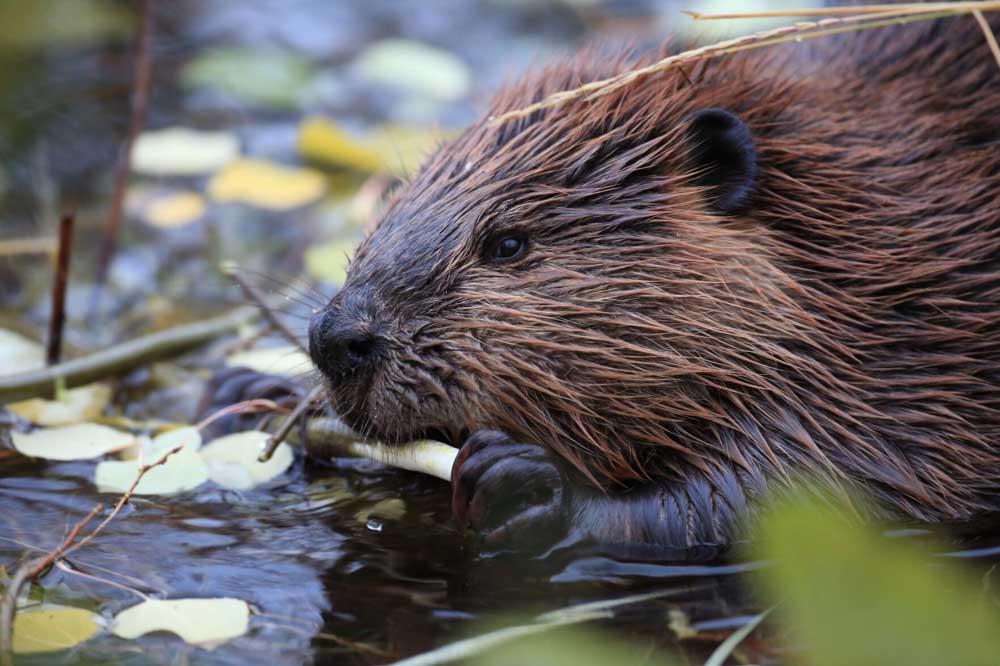Beaver bill impacts on Oregon vary depending on area
Published 5:30 am Sunday, July 16, 2023

- North American Beaver (Castor canadensis) eating.
BEND — There’s good news for Central Oregon’s beaver population.
Trending
House Bill 3464, affectionately known as the Beaver Believer Bill, is on Gov. Tina Kotek’s desk and will take effect upon her signature. Watchers of the bill say that action by the governor is expected soon.
The bill, passed by the Legislature in June, provides increased protections for beavers on private property by shifting their management from agricultural regulators to the Oregon Department of Fish and Wildlife. Opponents of the bill, however, say beaver dams are destructive to agricultural areas and that removing them from private property protects valuable crops.
Why a beaver bill?
Until now, state law has permitted the year-round killing of beavers without a permit on private lands, even if the animal was not causing any damage. The new law will change that.
Beavers in Oregon are currently classified as “predatory animals” on private lands. As “predatory animals,” landowners could more easily manage the species on their property. The Beaver Bill will reclassify them as a “furbearer” species to be treated like a raccoon or fox, a designation they already have on public lands.
A critical component of HB 3464 is that it requires landowners to get a permit from the Oregon Department of Fish and Wildlife before killing a beaver or beaver family under certain conditions.
“In doing so it opens the door to a possible conversation between landowners and ODFW staff on possible non-lethal coexistence methods before resorting to lethal measures,” said Sristi Kamal, deputy director for the Western Environmental Law Center.
Supporters of the bill say it will lead to more informed management because beaver kills will be better documented due to the permit and reporting requirements. Once the bill becomes law, ODFW will have better data on beaver removals and their impact on the landscape.
Central Oregon beaver impacts
There are varying opinions about how the bill may impact Central Oregon, a part of the state with relatively few beavers compared to areas west of the Cascades. ODFW says beavers are found on both public and private lands in Central Oregon but there are no surveys to confirm numbers.
Marc Thalacker, general manager of the Three Sisters Irrigation District, said his patrons are not impacted by beavers because the district is piped. In nearby Tumalo Irrigation District, general manager Chris Schull said he is “monitoring the situation” because provisions in the bill may impact water delivery to patrons.
The general managers of Arnold Irrigation District and North Unit Irrigation District said their patrons haven’t been impacted by beavers. Central Oregon Irrigation District general manager Craig Horrell said his district is “not too concerned” at this time.
Ochoco Irrigation District raised the biggest alarm bells among the districts contacted by The Bulletin, confirming that current beaver activity in streams and creeks impacts the district’s operations.
“OID uses streams as conveyances for water to patrons. When beavers dam up those streams it prevents water from getting delivered to diverters,” said Bruce Scanlon, the district’s general manager.
Matt Cyrus, president of the Deschutes County Farm Bureau and a patron of Three Sisters Irrigation District, played down the beaver impacts on private lands.
“I am not aware of anyone in Central Oregon who has an issue with beavers,” he said.
Cyrus said he has spotted beavers on his own property in the Lower Whychus Creek area, but said they were unsuccessful in dam building because of spring snowmelt.
“They kept trying and trying, but their dams were washed out by the higher spring flows,” he said. “Quite frankly, we were hoping they would be successful.”
Healthy ecosystems
Across the state, beavers can play an important role in maintaining ecosystem health, scientists say. Their dams create wetlands and improve the health of riparian habitats, they also mitigate the impacts of drought and make ecosystems more resilient in the face of wildfire.
“Beavers create and maintain wetlands, wet meadows, and ponds which are natural fire breaks. These areas provide refuge for livestock and wildlife during fires and habitat post-fire,” said Kamal.
According to Kamal, beaver habitats are more stable and less sensitive to short-term climate variability because they contain reservoirs of surface and groundwater that buffer habitats from drought. They also create conditions for groundwater recharge to occur during flooding.
“Central Oregon is rich in streams and rivers,” said Kamal. “When these rivers and streams are connected to their floodplains it improves their water quality and quantity, supports species conservation such as salmon, and bolsters carbon sequestration.”
Beavers mainly exist in areas of broadleaf riparian vegetation, including places where willow, alder and aspen trees are found.
The Ochoco National Forest is one area historically occupied by beaver populations. The animals were removed in the late 1800s and once they disappeared, wet meadows dried up, according to Kassidy Kern, a spokesperson for the Ochoco National Forest.
Kern said her agency is encouraging dispersal and new occupancy of beavers in the Ochocos. She expects beavers will move into new areas and improve wetland habitat in parts of the national forest.
“We have been encouraging beavers to re-colonize wet meadows over the decades through habitat improvement projects. When our wet meadows function appropriately, they act as giant cold water sponges holding water on the landscape year-round,” she said.
Reese Mercer, the founder of Western Beavers Cooperative, a group that supports beaver recovery, said private landowners in Crook County already work with state wildlife management agencies when managing wildlife so the new rules won’t be a big change when it comes to dealing with beavers. But Mercer worries how beavers will be treated under the new rules and she discourages relocation of beavers as a solution.
“Beaver relocation has low, long-term success and is stressful and often deadly to the beavers,” she said, adding that changes habitat improvements on private lands can help mitigate conflict between people and beavers.
“Infrastructure adaptation and mitigation solutions as the best way to address beaver conflicts,” she said.
Beaver ancestors have come in all shapes and sizes. An extinct species of beaver known as Castorides, which lived in North America in the Pleistocene era, could grow as large as seven feet long. Miniature beavers also roamed Oregon. They were about the size of a squirrel.
Beavers grow throughout their life and can reach four feet long and weigh 65 pounds.
Beavers are herbivores and eat a variety of aquatic plants and the inner bark of trees. They do not eat fish.
The beaver population in North America before European settlement was 100 million to 200 million. Hunting and trapping nearly extirpated the species. Protection efforts have grown the population to around 15 million.
Beavers do not live in their dam. Their dams create a pond and once its complete the beaver will build a lodge in the middle of the pond where it lives.
Beavers are the largest rodent in North America and the second-largest after capybaras of South America.









